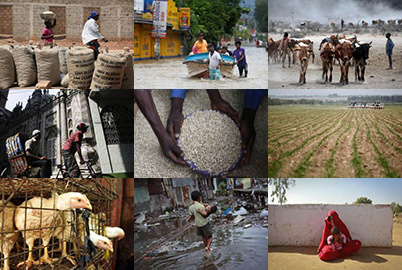DAKAR (AlertNet)-Ugandan rebels have repeatedly attacked civilian populations in northeastern Democratic Republic of Congo since the start of a joint Ugandan-Congolese military operation against them almost a year ago.
Hundreds of thousands of people in the Haut Uele and Bas Uele districts have fled their homes fearing brutal reprisals from Lord's Resistance Army (LRA) guerrillas, and insecurity is making it difficult for aid groups to reach those in need.
Here are some questions and answers about the neglected humanitarian situation in northeastern Congo.
WHAT HAS BEEN THE IMPACT ON CIVILIANS?
The U.N. children's agency UNICEF says 1,364 Congolese civilians have been killed, 2,700 others abducted (including 688 children) by the LRA whose fighters are notorious for committing acts of sexual violence against children, raping girls and women, torturing villagers and looting property in the east of Congo since late 2008.
There has been a rise in Congolese adolescents joining local vigilante groups to protect their communities from the LRA in areas where the Congolese army has a weak presence. The closure of their schools in an attempt to prevent child abductions by the LRA is another reason many youths are joining such groups.
"There is a risk of these children becoming combatants and soldiers," Guillaume Sauval, UNICEF's Emergency Projects Officer in Eastern Congo, told AlertNet by telephone.
There are about 240,000 internally displaced people in Haut Uele and Bas Uele. More than 27,000 others are now refugees in neighbouring countries with South Sudan hosting the biggest numbers.
"It is a permanent situation of fear," said Luis Encinas, the coordinator of operations in the Great Lakes region for aid group Medecins Sans Frontieres (MSF).
WHAT ARE AID GROUPS DOING?
A number of aid organisations are responding to the emergency.
MSF is currently delivering food and non-food items to about 40,000 persons. Between January and September UNICEF has distributed non-food items to 53,000 people and provided water and sanitation support to 80,000.
About 110 children who had gone missing have been re-united with their families, while over 400 former child soldiers who had been kidnapped by the LRA are being helped at a centre run by UNICEF through its local partners and Cooperazione Internazionale (COOPI), an Italian non-governmental organisation.
But most of the assistance offered by the aid community is limited to urban areas due to fears the LRA would attack humanitarian workers and civilian populations to steal relief items. Logistical access is also difficult in the area. Most of the support has to be done by air because there are no roads.
This has left huge numbers of people in need in rural areas. These include many displaced persons living in ill-equipped community shelters. As attacks continue many have deserted their villages to flee to towns where they are living with host families thus doubling the populations of urban centres.
"We have to go out of the cities, especially in Bas Uele where the situation is deteriorating," MSF's Encinas told AlertNet. "It requires really serious logistics support but there is an urgent need for a greater response by humanitarian
organisations," he said.
CAN U.N. PEACEKEEPERS ENSURE SECURITY?
Analysts say the United Nations' peacekeeping force in Congo (MONUC) has diverted troops from relatively calm parts of the country for deployment in the volatile North and South Kivu provinces and do not have the numbers necessary for a vast deployment in the Haut and Bas Uele districts.
However, there is MONUC presence in parts of the northeast, mainly in urban centres, and MONUC provide armed escorts to humanitarian groups who request support.
Our Standards: The Thomson Reuters Trust Principles.

